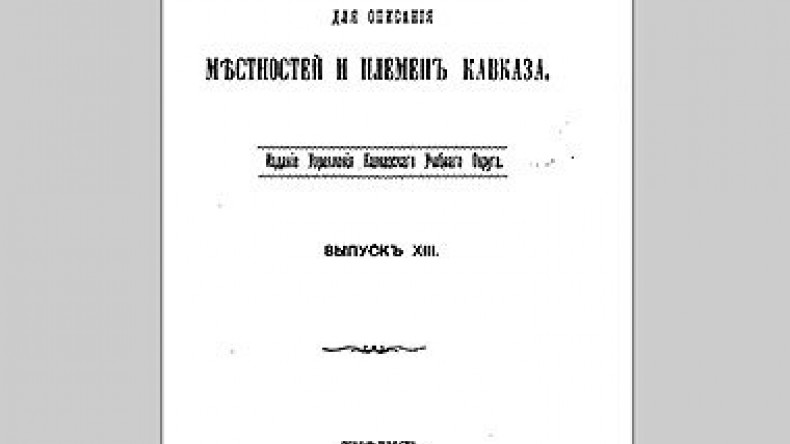
Scientific publication about monastery in Armenian village Verin Agulis, Nakhijevan
In the 13th edition for the year 1892 of the project “The Collection of Materials to Describe the Terrain and Tribes in the Caucasus,” Chaykend (Getashen) school inspector A. Tumanov published an article dedicated to the Monastery of St. Thomas in the village Verin ("Upper") Agulis in Nakhijevan uyezd of the Erivan Governorate of the Russian Empire.
“The monastery to St. Thomas the Apostle is in the village Verin Agulis in Nakhijevan uyezd, Erivan Governorate, 5 versts from town Ordubad,” Tumanov writes. (1 verst = 1.067 kilometers)
The way taking to the monastery is protected from two sides with mountains, and from the third side with the river Arpa. It takes the visitors to their destination through the village Verin Agulis. The Armenians constitute the dominating element of the population of this village. Every year, on St. Thomas the Apostle’s day, the Christians gather in this monastery for worship. It is headed by a special superior appointed by Echmiadzin synod.
“Even though the monastery is not considered to be a parish church, the evening and morning worship services conducted there are attended by many inhabitants of Agulis,” the author notes.
The article also recounts a noteworthy legend about the creation of St. Thomas the Apostle Monastery. According to the legend, it was founded by Bartholomew the Apostle, who was sent to Armenia by the Savior after His Ascension to heal the King Abgar from a grave disease. While St. Bartholomew was in Agulis, St. Thomas the Apostle was preaching in India. Hearing about Thomas’ martyrdom, Bartholomew built a chapel in Nakhijevan to the Martyr’s memory. Later on, St. Gregory the Illuminator turned it into a monastery.
The author cites an inscription carved on the Western doors of the monastery temple, which testifies, “Bartholomew, who came to the Armenians and founded here this House of God in the name of St. Thomas, consolidated the throne of his disciple Komsi. He appointed him to be the head of the congregation of Goghtn canton (one of the cantons in ancient Armenia, comprising the aforementioned villages and town of Ordubad – author’s note): Blizhniy Agulis (“Near” Agulis) and much-praised Dasht (Nerkin (‘Lower’) Agulis), annexing also Tsgna, Ramis, Busta, Faraka, Bugrut … Dastak, Vanand, Trunis, Tnakert, Obovanis, Kaghakik, Anapat, Handamej, Verin Get, Kesher, Nusnis and Ordubad. After coming and seeing Nomos (Bartholomew’s disciple, whose tomb is in Agulis, local legends say – author’s note), St. Gregory confirmed this in 305 AD and made a copy of this inscription.”
Another testimony is inscribed on the Western wall of the temple. It says the monastery was last renovated in 1694. “It is built of ashlar facing with solid masonry of lime mortar. A majestic dome towers up by the Western narthex,” Tumanov describes the way the monastery looked by the end of the 19th century.
St. Thomas’ Monastery (“Tovma” in Armenian) ceased to exist in the 21st century as the Azerbaijani authorities destroyed it.
“The Collection of Materials to Describe the Terrain and Tribes in the Caucasus” is a large-scale publication of narrative sources carried out by the management of the Caucasus Educational Okrug in 1881-1908. It includes researches and description of the history, life, and ethnographic characteristics of the peoples inhabiting the Caucasus region of the Russian Empire.
Newsfeed
Videos






























